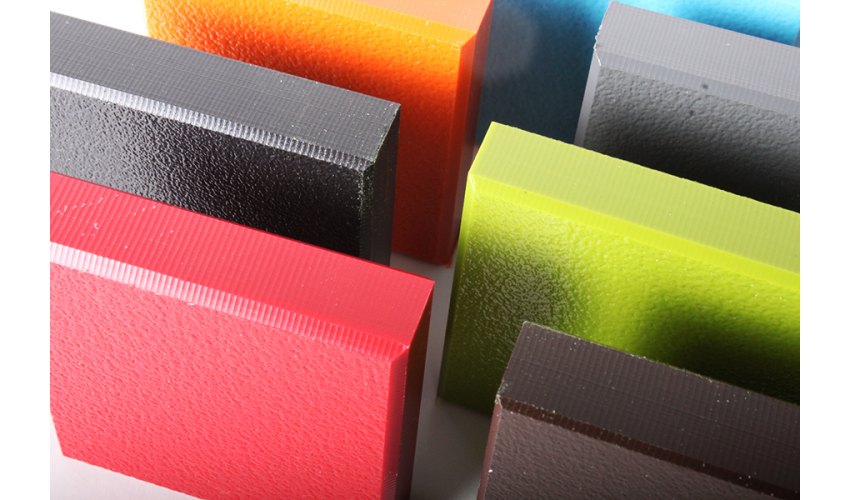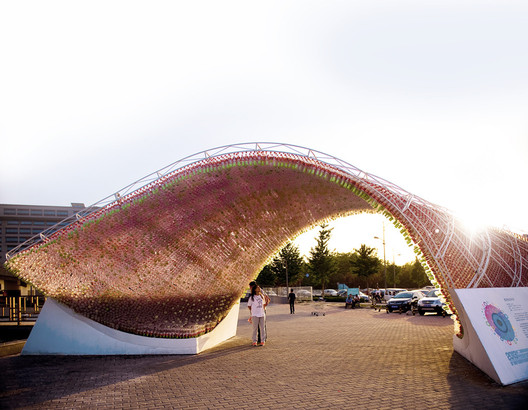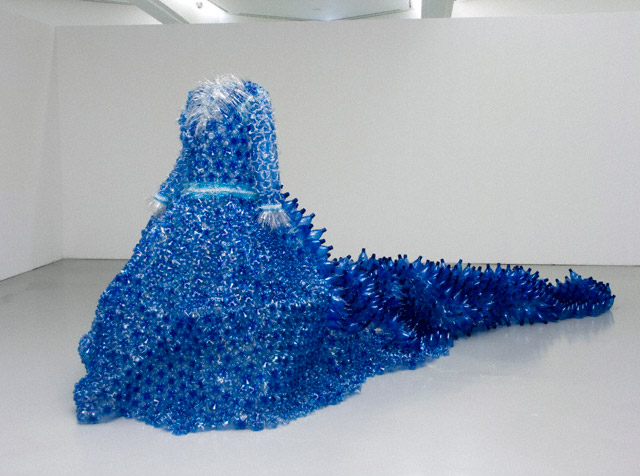In architecture, a broader sense of sustainability is often overlooked. However, designers must pay attention and consider how they can contribute through alternative building materials. Plastics, for example, are fairly durable and act as good insulators. In general, there are close to 45 different types of plastics and each type carries numerous variations. Depending on the intended use, some plastic can be flexible while others don’t, but both can contribute to the construction process. In hopes of bringing these precious plastics to light, some architects have taken it upon themselves to design plastic projects.

Proud Plastic Projects | Precious Plastic
Using plastic as the primary material in a project is a bold statement. Around the world, various architects are investing in plastic to bring them into the light and encourage smarter building. One example by SelgasCano is the 2015 Serpentine Gallery Pavilion. The main building material is ETFE, a fluorine-based plastic, alongside a minimal steel frame. The plastics form a series of tunnels colorfully and expressively.
At the New York Institute of Technology’s School of Architecture, SodaBIB takes plastic bottles and transforms them into a shelter. Bottles are compressed and overlapped to create a Spanish tile-style roofing system. Designs like SodaBIB capitalize on cleaning and repurposing plastic in a sustainable fashion that can serve communities around the world.
The Serpentine Pavilion is a way to engage the community and raise awareness on the possibilities of plastic in beautiful ways. Multiple other projects, such as the Cola-Bow Installation in Beijing, make art out of precious plastics and make a statement against pollution using over 15,000 recycled plastic bottles.

As we all know, plastic comes in different shapes, sizes, and forms. While some projects use recycled or repurposed plastic bottles, other projects take plastic in its rawest form to create art and architecture. For example, Urchin Impossible Circus by CODA is an installation that aims to question usefulness and uselessness. Built with 360 plastic chairs, Urchin questions everyday objects and their relation to the human body.
Another precious plastic project is Oribe by renowned Japanese architect, Kengo Kuma. Using corrugated plastic boards, Kuma builds a cocoon-shaped mobile tea room. The bands that fasten the plastic boards together can easily be unfastened, making it easy to move the structure around in the form of cheap materials. This last example truly puts plastic in the forefront by using ice cream buckets as the structure’s facade.
Microlibrary Bima by SHAU hopes to revive interest in books cost-effectively and naturally. The 2000 ice cream buckets used allow daylight to pass through and make cross ventilation easy. In turn, a fun and impactful facade is created, attracting passersby and highlighting plastic.

The Possibilities of Plastic
Plastic as a construction material can come off as unrealistic, and that’s fairly understandable. However, as shown from the previous examples, plastic has potential. Despite their low ductility, plastics with sufficient surface roughness have good durability and are good electrical insulators. To add to that, plastics can be given essentially any type of finishing and range from being fireproof to slow burners.
As described in Kuma’s project Oribe, moving and fixing plastic is also convenient and quick. They can be glued, drilled, or bolted in a relatively easy process, encouraging modular and effective design. However, plastic is harmful to the environment and is a major cause of pollution. It’s nearly impossible to avoid plastic in your daily life and the effect it has on our local cities is noticeable. To lessen that, designers and architects, or anyone really, can begin to turn our relationship with plastic into something more positive.
Repurposing plastic bottles, creating art, or investing in reusable products can alleviate some of the stress put on the environment. It is a personal challenge to begin to value these precious plastics and understand how they can function through multiple avenues.


A Positive Plastic Future | Precious Plastic
Now the question falls on how we can use plastic as a sustainable construction method for now and the future. Plastics exist anywhere imaginable and while they’re usually painted in a negative light, it doesn’t have to be that way. Polymers, for example, are essentially 100% recyclable. They’re capable of being used over and over again to produce the same product.
The bigger issue is that most plastics cannot be recycled and are deemed unsustainable and unprofitable. However, organizations around the world are attempting to eliminate the negativity surrounding plastics and working with their strong, durable, waterproof, and lightweight qualities. Within the construction industry, plastic is still not a common material. It will take more than this article or a few architecture projects to raise awareness and make a difference.
Political advancements and widespread awareness are crucial in encouraging a bigger chance of investment. Low-income populations and minority communities can benefit from movable and modular structures or even plastic art installations that give more life and attention. It will require a strong foot forward but plastics can surprise you. They have a massive potential to become more common in construction, renovation, and art.
References
- https://www.archdaily.com/783728/plastic-architecture-12-projects-that-highlight-the-potential-of-polymers
- https://architizer.com/blog/inspiration/collections/an-illuminating-wave-of-plastic-architecture/
- https://architizer.com/projects/urchin-impossible-circus/
- https://architizer.com/projects/oribe/
- https://theconstructor.org/building/plastics-construction-material/12438/
- https://www.thoughtco.com/what-are-plastics-820362
- https://www.bbc.com/future/article/20200819-why-plastic-waste-is-an-ideal-building-material#:~:text=Plastics%20are%20strong%2C%20durable%2C%20waterproof,to%20produce%20the%20same%20goods.


















